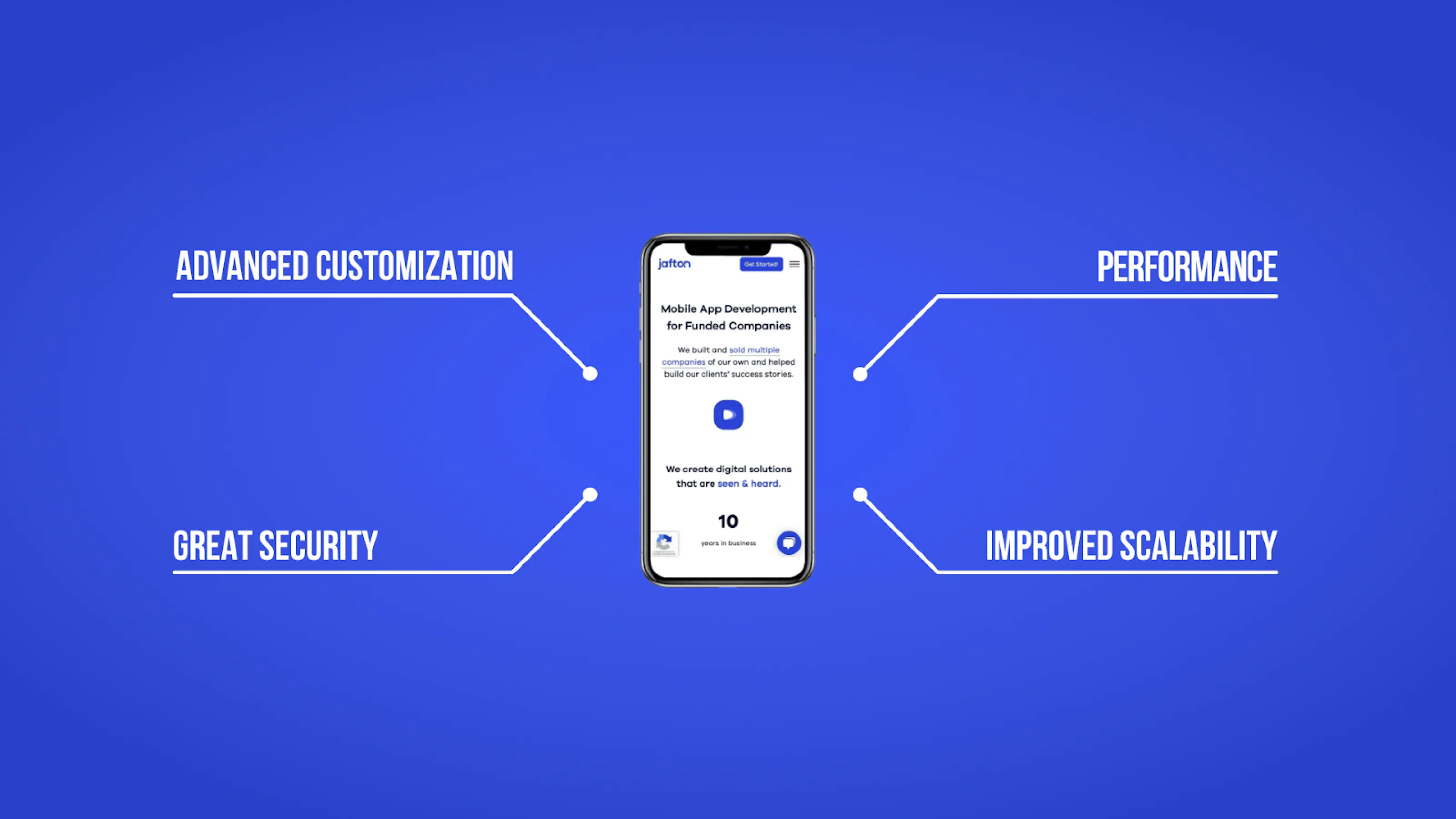Flutter vs Native Development

If you have asked this question, then most likely you want to create a mobile application and are trying to figure out which technology you should use.
Well, we have prepared this article just for you! Here is the most complete guide, revealing the pros and cons of both approaches, as well as our personal recommendations in which situation of the approaches should be resorted to.
Have fun reading!
Table of contents:
- Traditional custom development
- Flutter and its history
- What are the benefits of using the flutter approach
- What are the benefits of using the traditional approach
- Where are they applicable
- Summary
Traditional custom development

Talking about the traditional custom development approach we imagine a team of several developers, designers, and Project managers, who are involved in developing one single project. Also, this approach is about using native programming languages and 100% pure code.
Simply put, Android and iOS operating systems have their own “original” programming languages, in which it is customary to write applications for each platform. For Android, it's Java and Kotlin, and for iOS, it's Objective C and Swift.
When you create an application using a native approach, you have the opportunity to create an absolutely unique design, add any features and make the application the way you want it to be. In this case, there are almost no restrictions in development. Almost any custom feature can be built. And in the future, you will be able to add or remove any elements, which allows you to do better work on supporting and bringing new versions of the mobile application to the market.
Of course, there are disadvantages to traditional development, too. For example:
- High costs;
- Slow development process;
- Require a bigger team;
We will have a deeper look at each in the upcoming parts of the article.
Flutter and its history

Flutter is a free mobile app development tool created by Google. It was released in May 2017. In simple words, Flutter allows you to create your own mobile application with a single array of code. You don't need to learn those 2 programming languages we have talked about in the previous section. You write only 1 code and it works on both platforms identically.
To develop with Flutter, a programming language called Dart is used. It is also created by Google and was released in October 2011.
Dart focuses on the development of web page layout; it can be easily used to create both mobile and web applications.
Here are several benefits:
- Fast. Sometimes 2-3 times faster than native development
- Cheap. Since there is only 1 developer needed and the development time is reduced
- Ready build-in elements that offer you a pretty design
But also some drawbacks for sure:
- No uniqueness. Since it’s a framework, your creativity is bounded by built-in solutions.
Let’s look at all this in detail!
What are the benefits of using the Flutter approach
Let's take it in order
1.Development speed:
As we mentioned earlier, development in flutter takes much less time than in a native programming language. This is achieved due to the fact that, firstly, you do not need to write 2 versions of the application for 2 platforms, and secondly, flutter is a framework, which means built-in code blocks that can be used in development.
2. Cost:
Several things affect the cost of creating an application: platform, complexity, amount of time spent, and additional features. But the main influence is the number of programmers required, as well as the development time. Obviously, flutter will be a more profitable solution. Moreover, this also applies to the support of the application. From the fact that the foundation is the same, then the update will be the same for both Android and iOS platforms. This is an additional plus to saving money in the future.
3.Performance:
Yes, it is a framework, but it has improved a lot in the last couple of years and is now almost no different from native development.
4.Beautiful UI:
The built-in elements are well-designed and offer you a good choice, allowing you to create a wonderful user interface for your projects.
What are the benefits of using the traditional approach
1. Better Performance:
Even though Flutter made great changes and really shows good results in performance, in a long run it will definitely lose to native apps.
2. Advanced Customization:
Native development approach allows you to have any kind of design you wish. With this approach, developers can access the camera, microphone, and other hardware to build a truly unique product.
3.Greater Security:
Another plus in the direction of native development is a higher level of data security. Because of the growing number of cyber attacks on companies, this item is worth your attention.
As we have already said, native applications are created for a specific platform. Thus, the data is encrypted within a single system, which significantly increases the level of security
4. Improved Scalability:
Native applications are more resistant to loads compared to cross-platform ones - another point worth paying attention to if you are going to grow an application and understand that the traffic will be large.
In addition, with the classical approach to development, it is easier to scale, because there are more opportunities for improving the application in the future, and adding new features.
Where are they applicable
Let's start with a cross-platform development:
1. MVP (Minimum Viable Product)
Obviously, cross-platform development is just perfect for creating an MVP! Fast, beautiful, cheap, and there will be almost no difference in productivity with native applications.
2. Simple tool
The popularity of mobile apps continues to grow steadily every day. We are already used to doing the main work on the phone. Therefore, every entrepreneur is now creating at least a simple, uncomplicated application for his business.
3. Additional platform
A great addition to the main platform if you need to do it quickly, without unnecessary expenses, and without counting on a huge rapid increase in traffic and load on the application.
Well, where the native development can be applied?
Well, the main case, when the native development would be your choice is when you need a huge 100% custom app. That is where this approach shows all the best parts about it. The best performance, security, and scalability. But you won’t win only at the time of development. After a couple of years, after releasing several new versions of your app and having a huge number of users you will be happy that back in time have made the right choice.
Summary
Both native and cross-platform development have their pros and cons. The main thing is to understand where and which approach should be applied.
If you need to create a project quickly, cheaply, but at the same time without loss of quality and with a good design, then your choice should clearly stop at cross-platform development.
An example of such a case is the creation of an MVP, a simple or temporary solution for a business.
If you have already checked your project for viability and received good feedback that users really need it and the project will pay for itself, then your choice should most likely fall on custom development. The native approach to the development of mobile applications allows you to create a truly unique design that you want, opens access to all the capabilities of platforms, and also has a higher level of security and scaling capabilities in the future.
Interested in our app development services? Tell us about your project!
- Schedule a call
- We do a discovery and consultation meeting
- We prepare a proposal







